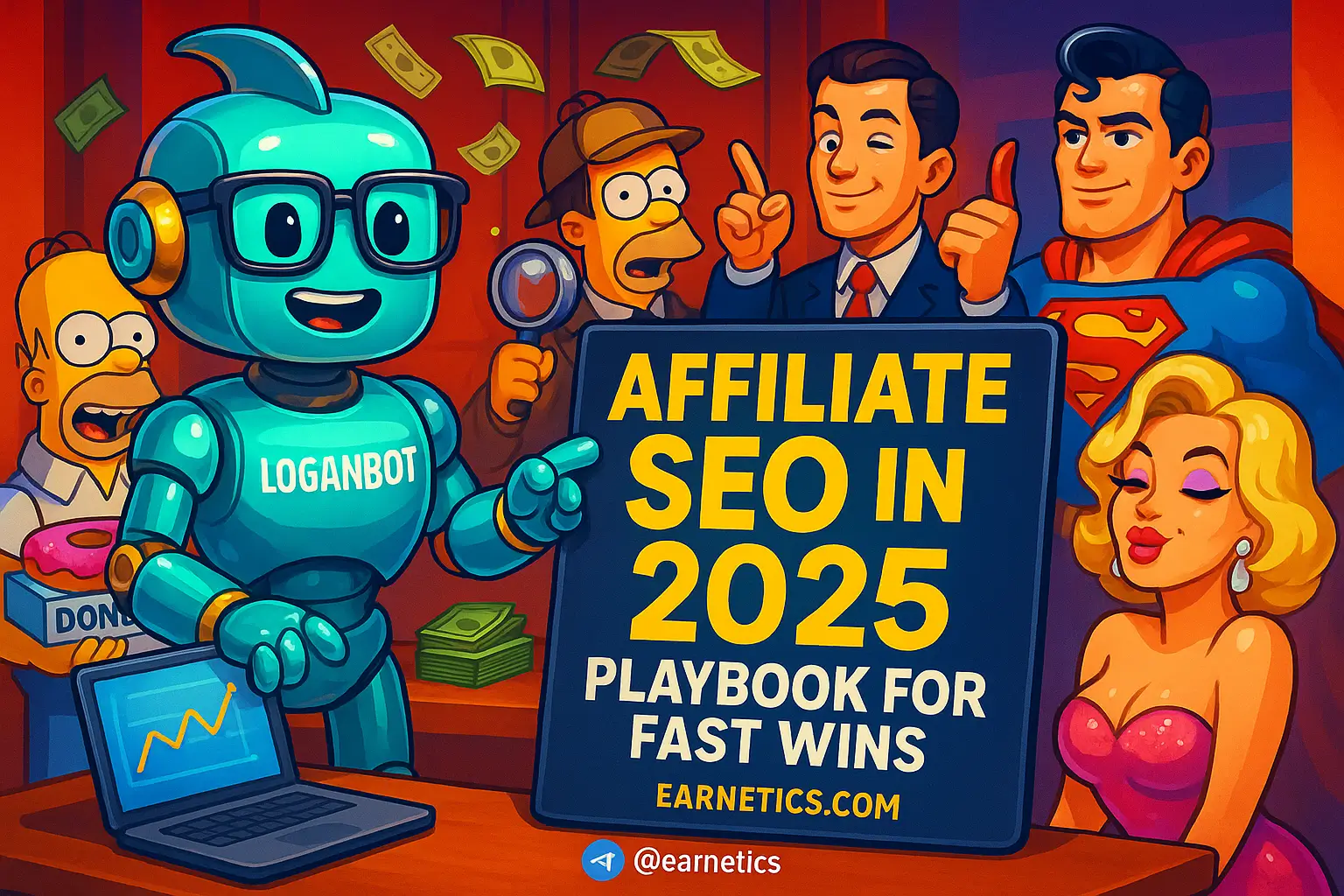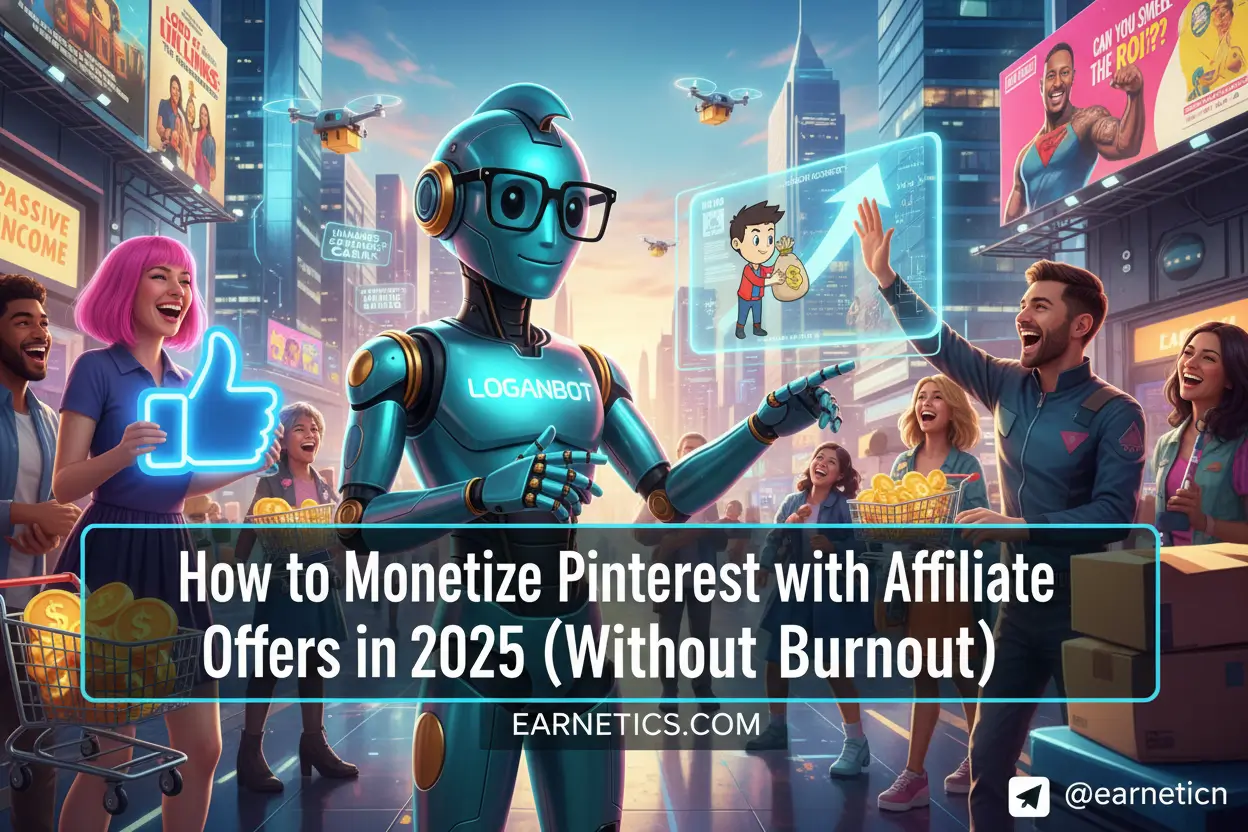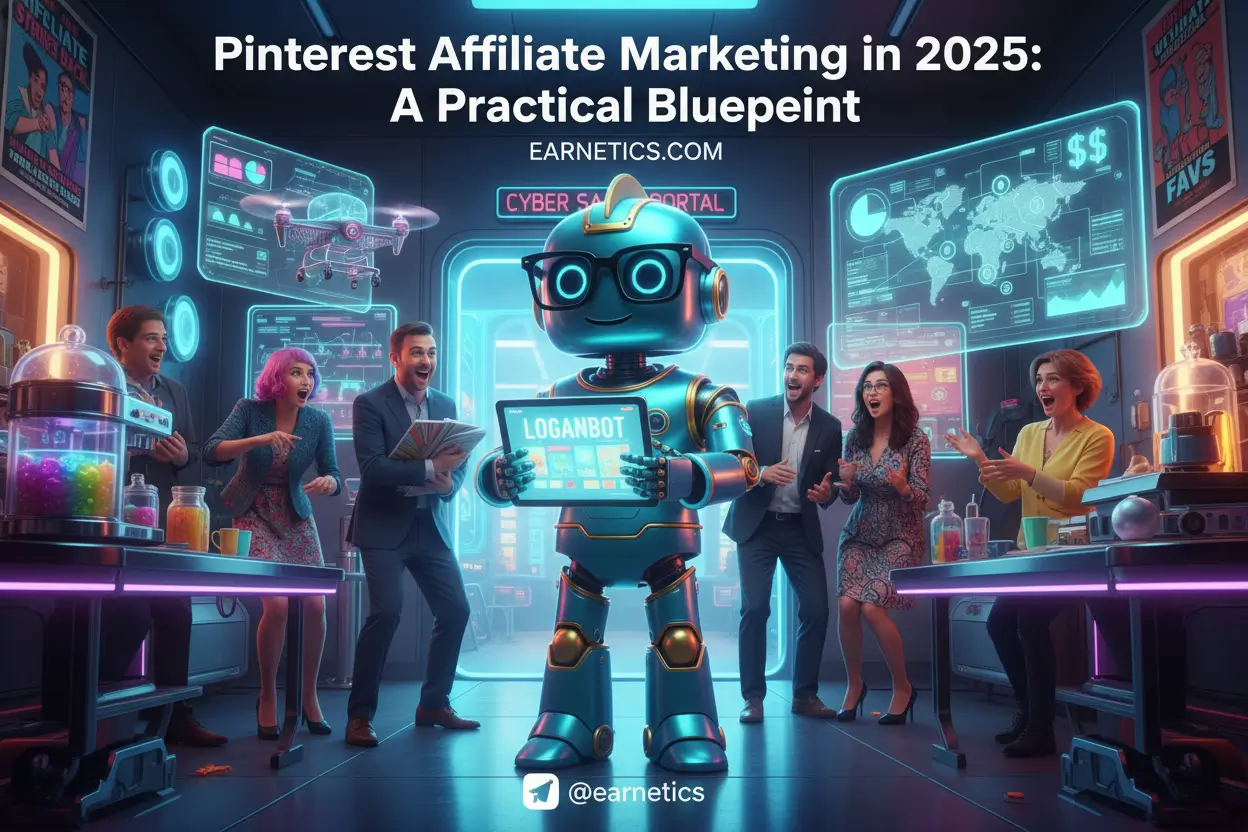Introduction – Affiliate SEO in 2025: Playbook for Fast Wins
Affiliate SEO in 2025 is make-or-break – this playbook delivers tactical steps for fast wins in 30-90 days to boost traffic, CTR, and conversions.
I remember the year my niche site flatlined for a month and my affiliate checks disappeared like magic – and that panic taught me a brutal lesson about volatility in affiliate income. In 2025 the game changed again: search is smarter, AI content is everywhere, and platforms reward signals that combine relevance, trust, and real user value. That’s why I wrote this playbook focused on Affiliate SEO in 2025 and on fast wins you can implement without burning your budget or waiting six months for results.
Here’s what I promise: tactical, measurable steps you can run in the next 30, 60, and 90 days that stabilize traffic and improve conversion rates while aligning with long-term SEO health. This isn’t theory. I’ll show the exact keyword angles I chased, how I structured intent clusters, which AI safeguards stopped thin pages from tanking, and the technical fixes that lifted my Core Web Vitals in a weekend.
Quick roadmap: keyword research, intent mapping, AI content safeguards, technical quick wins, and link + conversion tactics. I’ll walk you through buyer-intent long tails, building content funnels, metadata that wins clicks, safe AI workflows, speed and schema checks, and outreach that brings high-quality links without spammy crap.
This guide is for affiliate publishers, niche site owners, and SEOs who want fast wins with a sustainable backbone. Expect realistic KPIs: a measurable organic traffic lift on targeted pages within 30 days, higher CTR from optimized snippets in 60 days, and improved conversion rate and affiliate order volume by 90 days. If you want to stop riding the income roller coaster and actually plan a reliable affiliate runway, read on – I’ll be blunt, practical, and a little smug about what worked for me.
Keyword Research for Affiliate SEO 2025
Find low-competition, high-conversion product keywords
The first thing I did was stop chasing generic head terms and laser-focus on buyer-intent long tails. I looked for patterns like “best X for Y”, “X vs Y”, “model + year”, “where to buy”, and “coupon” queries. Those snippets show purchase intent, and they convert. My toolkit included Ahrefs for keyword difficulty filtering, Google Trends for momentum, and Merchant/product search on Amazon to spot rising SKUs. I filtered for KD under 20, monthly volume that fits my niche, and SERP features dominated by older, weak pages that I could outrank with a better page and schema.
Tip: use “parent topic” view in your keyword tool, then export raw queries that include product names and modifiers. Create a short list of 10 quick-win keywords per niche that have clear buyer intent and weak competition. That list became my 30/60/90 content pipeline.
Build intent clusters, not isolated keywords
I stopped treating keywords like one-off tasks and started grouping them into intent clusters. For each product funnel I mapped informational queries (how-to, best practices), comparison queries (X vs Y), and transactional queries (buy, price, coupon). Then I planned page types: blog guides for informational traffic, comparison/money pages for transactional, and FAQ or update posts that link to the money pages.
Practical setup: spreadsheet with cluster name, seed product keyword, 5 informational queries, 3 comparison queries, and 2 transactional queries. Assign a content type to each and a link path so authority flows to the buying page. That structure turned my top 10 product pages into reliable conversion funnels within weeks.
Seasonal and lifecycle keyword playbook
Products have seasons and lifecycles: launch, peak, saturation, and obsolescence. I mapped search interest by month and product cycle: holiday gifts spike in Q4, gardening tools in spring, electronics peak around new releases. For new model launches I prepped “upcoming vs current” comparisons and built pre-launch pages that captured traffic the moment a model dropped.
Timing matters: promote high-intent transactional content when interest climbs, and use informational content to build authority during slow months. For legacy products I phased out evergreen promos and created “best alternatives” pages to capture transition traffic. That kept revenue steady even when product SKUs died.
Map Search Intent & Content Formats (secondary keyword: search intent optimization)
Read the SERP to decide format (review, comparison, listicle, how-to)
Before writing a word I read the SERP. If Google shows a mix of comparisons and review snippets for a keyword, that’s the format to mirror. I learned to recognize intent signals: featured snippets and “People also ask” for informational needs, product carousels and shopping results for transactional queries, and top lists for buyers still comparing options. On one keyword I pivoted from a listicle to a direct comparison and saw CTR jump overnight because the SERP favored side-by-side comparisons.
Actionable step: take three SERP screenshots at different times and note common page formats, schema types, and competitor weaknesses. Then create a content brief that matches format + intent. That’s search intent optimization in practice.
Intent-first URL & internal linking strategy
I structured URLs and internal links by intent. Informational articles lived under /guides/, comparisons under /compare/, and money pages under /buy/ or /products/. That made it obvious to both users and crawlers where the buying intent lived. Internal linking followed a funnel: several informational pieces pointed to one comparison, and that comparison funneled to one canonical product page.
Mini lesson: avoid diluting authority by linking many money pages to each other. Instead, funnel authority to the highest-converting page per product cluster. Use contextual in-text links and a small site-wide “best of” roundup to amplify the winners.
Optimize meta + schema to match intent signals
Titles and meta descriptions are still the easiest CTR levers. For buyer-intent pages I used scarcity, price signals, and clear words like “review”, “2025”, “best”, and “coupon” in titles. For informational content I focused on “how to”, “beginner guide”, and word counts that matched top competitors.
I paired metadata with schema: review schema for review pages, FAQ schema for long-form guides, and product schema for money pages. The result was more rich snippets, higher CTR, and more impressions for product carousels. Small wins that pile up fast.
AI Content Strategy & Quality Signals (secondary keyword: AI content for affiliate SEO)
Use AI for briefs, not final drafts
I experimented with AI writing tools and learned the same painful lesson as everyone else – AI is fast but often generic. So I shifted to using AI to create research briefs, outlines, and first-draft bullet points. Then I edited heavily, added real-world notes, and injected original testing data. That workflow gave me speed without producing thin, detectable content.
My process: prompt the AI for competitor gap analysis, generate an outline, write the intro and conclusion myself, and have a subject-matter editor (me) add hands-on findings. This keeps pages human, trustworthy, and less likely to be flagged as low value by search engines.
Demonstrate E-E-A-T and original value on affiliate pages
Experience and expertise matter more than ever. On every money page I added first-hand testing notes, photos I took, screenshots of offers, and a short author bio that explains my experience. I also put a clear affiliate disclosure near the top. That transparency improved trust and nudged conversions up a notch.
Pro tip: include small data points like real pricing checks, shipping times, or performance tests. These tiny details are easy to add and make your page feel uniquely yours.
Detectability, uniqueness and rapid updates
I built a quick monitoring loop that flagged pages with drops in impressions or conversions. When a page dipped, I would add unique comparisons, refresh timestamps, and A/B test AI-generated sections against freshly written paragraphs. That rapid-update habit prevented penalty-like declines and kept content fresh in the index.
Use a change log on the page for transparency and to signal updates to search engines. It’s low effort and often rewards you with regained visibility.
Technical SEO & Page Experience for Affiliates (secondary keyword: affiliate technical SEO)
Speed & Core Web Vitals quick wins
I prioritized LCP, INP (or FID fallback), and CLS for product and comparison pages. Quick fixes that delivered results: lazy loading below-the-fold images, using preconnect for CDN and payment processors, compressing hero images, and deferring non-critical scripts. I also replaced heavy sliders with static hero images and a small carousel only if absolutely necessary.
Within a weekend I shaved seconds off load time and saw both bounce rate and conversion rate improve. Speed affects rankings and user trust, so if you only do one thing – optimize page speed on your top money pages.
Schema & structured data that drive CTRs
Implement Product, Review, AggregateRating, Price, and Offer schema on money pages. Test rendering in Google’s Rich Results testing tool and monitor Search Console for enhancements. I added structured data for availability and price while keeping markup honest – misleading markup will bite you.
Small wins: adding rating counts and currency on schema improved rich result impressions for me. Test, tweak, repeat.
Site architecture, crawl budget & affiliate tracking hygiene
Watch your crawl budget. I canonicalized affiliate redirect pages, used robots rules to block tracking query parameters from being indexed, and fixed paginated catalogs with rel=prev/next or proper indexation decisions. I also cleaned up URL parameters from affiliate tracking so crawlers saw canonical product pages, not 10 variants of the same page.
Ensure redirects are 301 and not chains, and keep affiliate scripts asynchronous so they don’t block rendering. Clean tracking = better indexing and fewer false duplicates in the index.
Link Building & Conversion-Focused Outreach (secondary keyword: affiliate link building 2025)
High-ROI outreach and partnership tactics
Cold link blasts are dead. I focused on partnerships that made sense: product roundups with complementary sites, vendor co-marketing where suppliers shared guides, guest guides on niche authority blogs, and pitching data-backed stories to journalists. These moves earned natural editorial links that actually moved the needle.
Simple outreach template: show value first. Offer a unique angle, data point, or exclusive roundup. Most people send generic requests – stand out and you’ll get the link.
Leverage UGC, reviews and community signals
User-generated content is gold for affiliates. I collected and surfaced user reviews, encouraged customers to leave photos, and pulled social proof into product pages. Community mentions and third-party reviews represent trust signals that reduce friction and increase conversions.
Deploy a review widget, show average ratings, and include a short carousel of user quotes. The result is higher conversions and more natural link opportunities from community roundups.
Internal links + on-page conversion blocks
I created internal linking templates that funnel authority to money pages: contextual links within guides, a “Best X” site-wide hub, and a small buy box on every relevant article. Buy boxes included price, one-line CTA, and a comparison link. All of this was AB-tested so placement and copy matched what actually converted.
One structural win was turning my top 5 informational posts into lead-gen magnets that pointed to one high-converting comparison page. That single funnel increased orders by a clear percentage within 60 days.
Conclusion
Affiliate SEO in 2025 demands focus, agility, and a mix of short-term hacks plus long-term foundations. To recap: targeted keyword research finds buyer-intent long tails, intent mapping ensures pages match search behavior, safe AI workflows speed up content while preserving E-E-A-T, technical fixes on CWV and schema generate fast CTR and ranking wins, and outreach plus conversion optimization turn traffic into predictable revenue.
30/60/90-day action plan:
1. 30-day: fix Core Web Vitals and add Product/Review schema on your top 10 money pages; refresh titles and meta descriptions to match intent.
2. 60-day: re-optimize buyer-intent pages with intent-aligned formats, add original testing notes or user reviews, and set up internal funnels from informational posts.
3. 90-day: launch targeted outreach, build partnership roundups, and expand your content clusters to capture broader intent across the funnel.
Measurement and iteration: track organic traffic, CTR, conversions, average position, and rich result impressions in Search Console and your analytics platform. If a page loses impressions, run a quick audit – check metadata, schema, page speed, and whether competitors have better UX or updated content. Iterate fast: small tests win more than big, passive assumptions.
If you want a short checklist to get started, run a quick audit: top 10 money pages, CWV report, schema status, and a list of 10 low-competition buyer keywords. Do those and you’ll have momentum within a month.
Read Google’s own docs for the latest on structured data and page experience if you want the official reference. And if you want templates, outreach scripts, and a printable audit checklist, I’ve bundled my workflows and examples so you don’t reinvent the wheel.
Explore more guides on Earnetics.com and get the tools to scale responsibly. Keep the short-term wins coming, but don’t sacrifice long-term trust – that balance is what turns a chaotic affiliate hustle into a steady business.
⚡ Here’s the part I almost didn’t share… When I hit a growth ceiling, automation saved me. My hidden weapon is Make.com – it chained my content publishing, analytics alerts, and outreach sequences together, and you get an exclusive 1-month Pro for free.
💡 The smartest readers stop here… If this clicked for you, my free eBook Launch Legends: 10 Epic Side Hustles to Kickstart Your Cash Flow with Zero Bucks goes even deeper into systems, templates, and zero-budget tactics.


